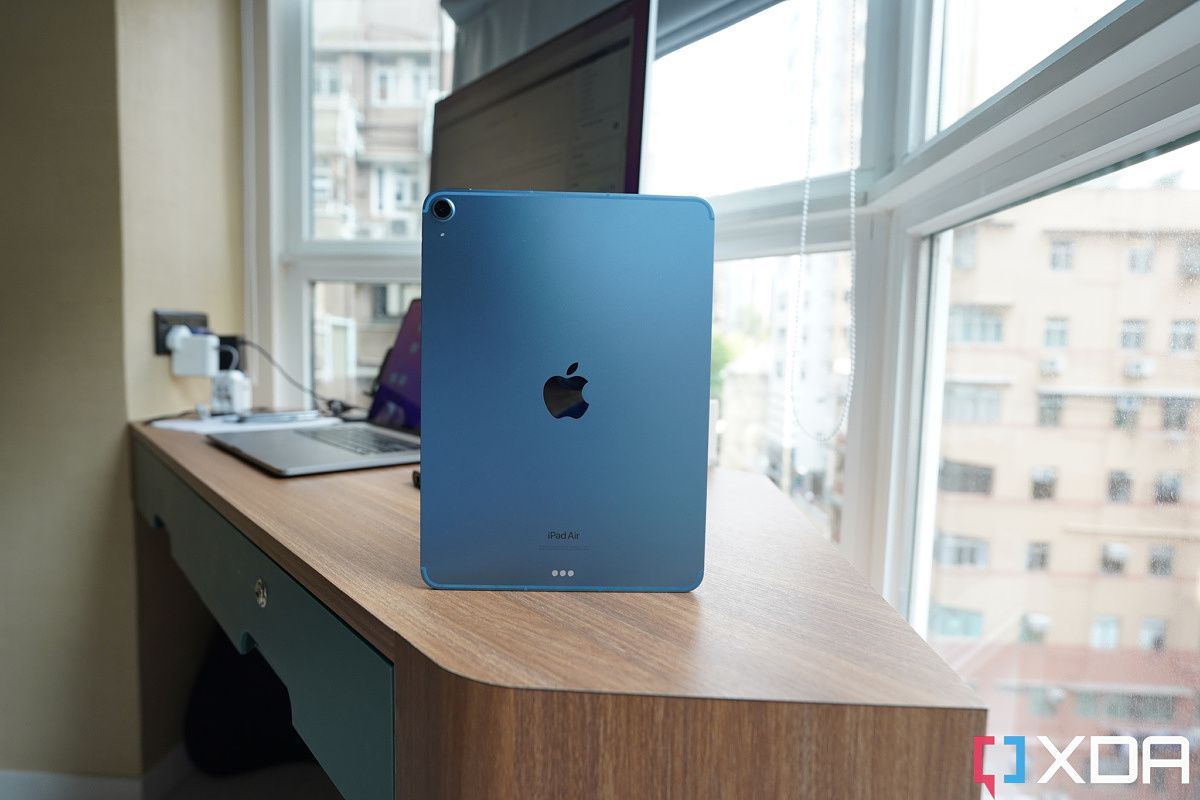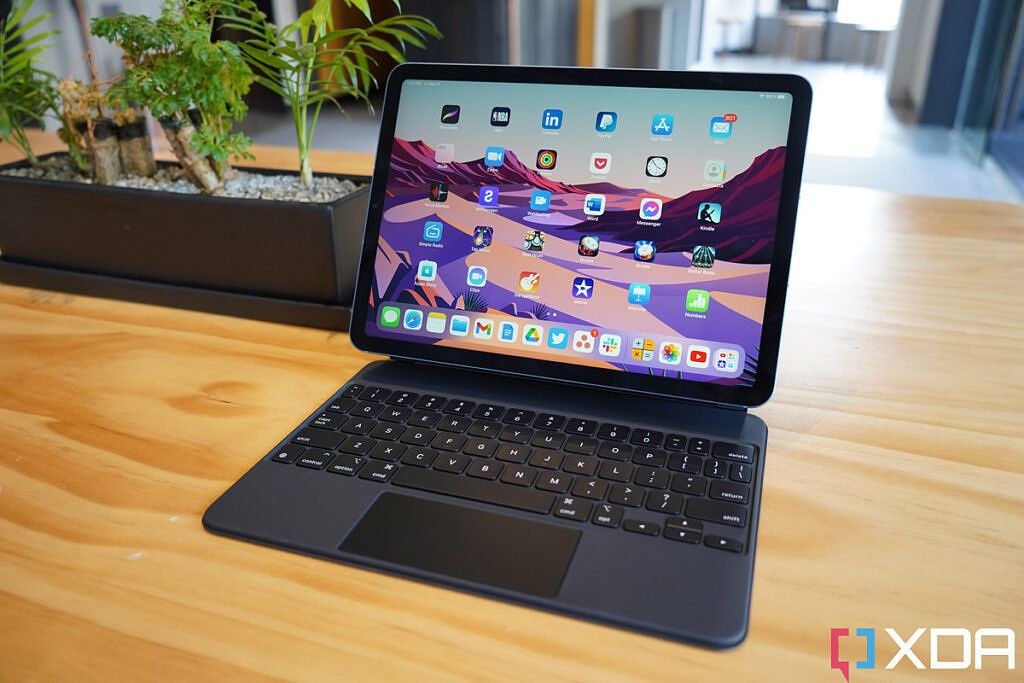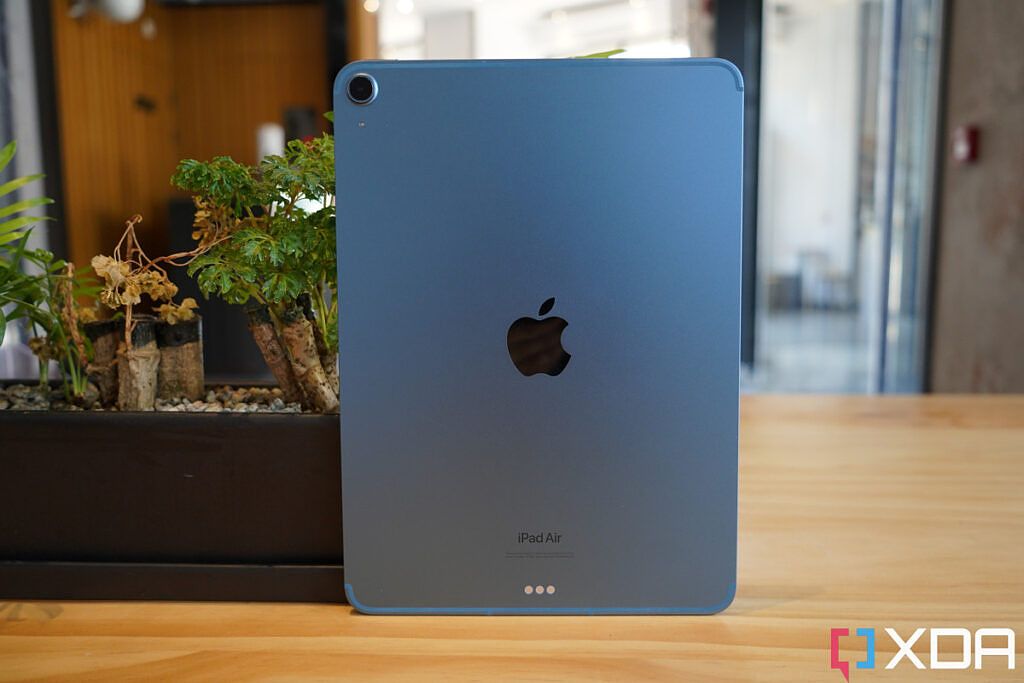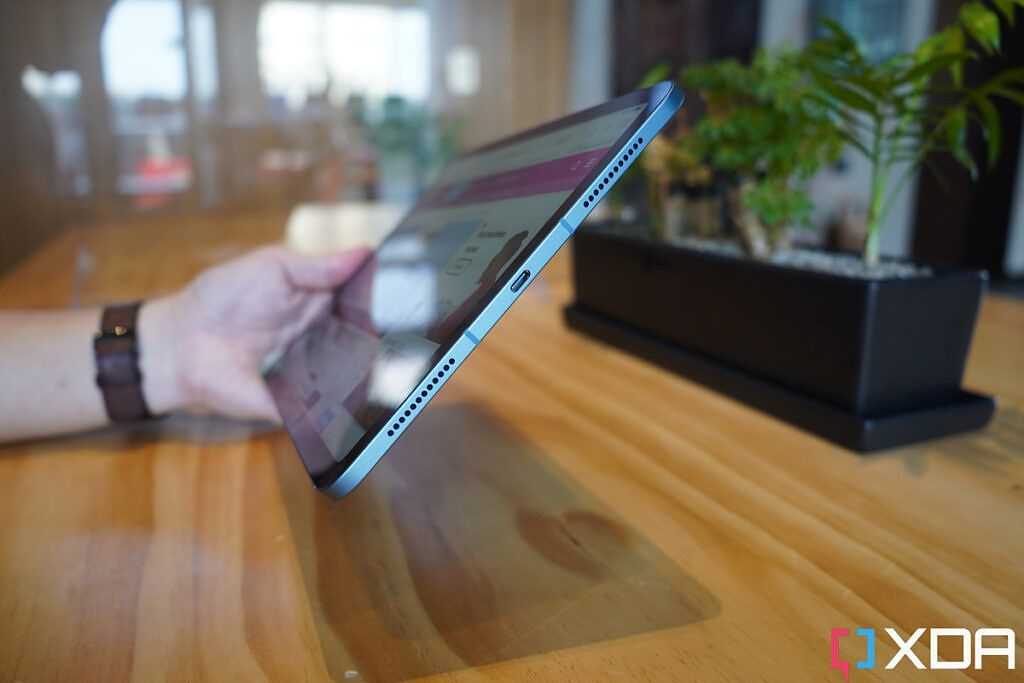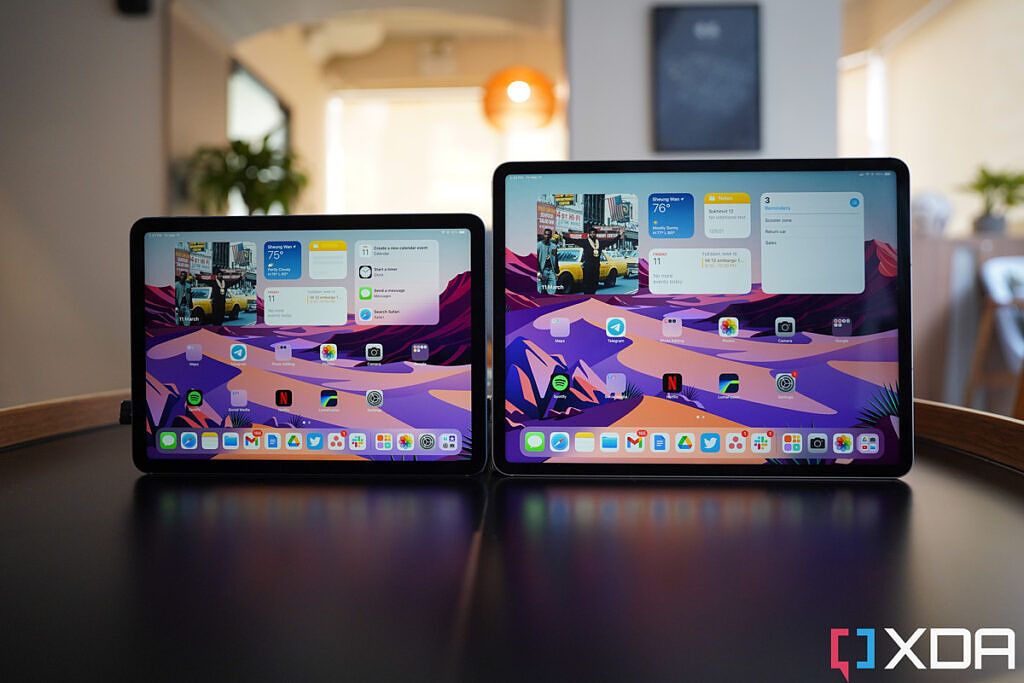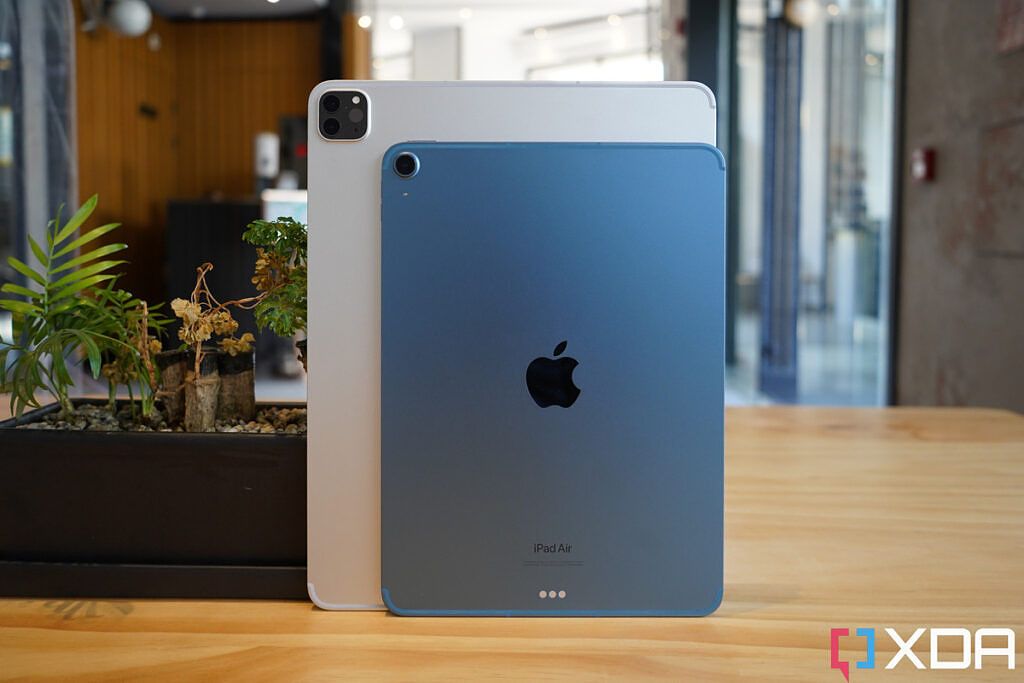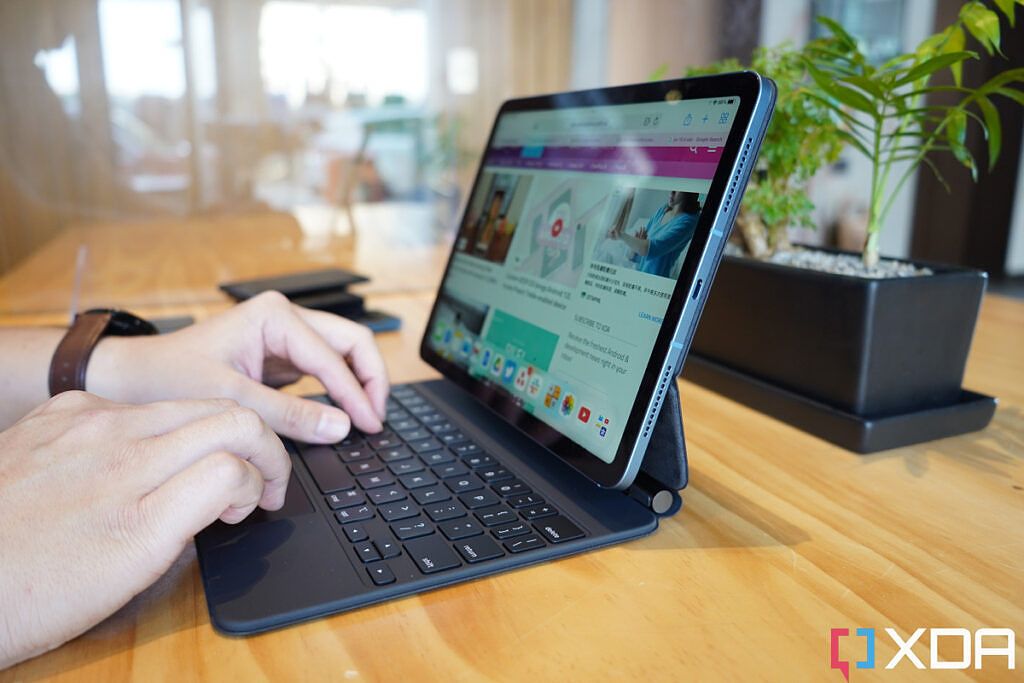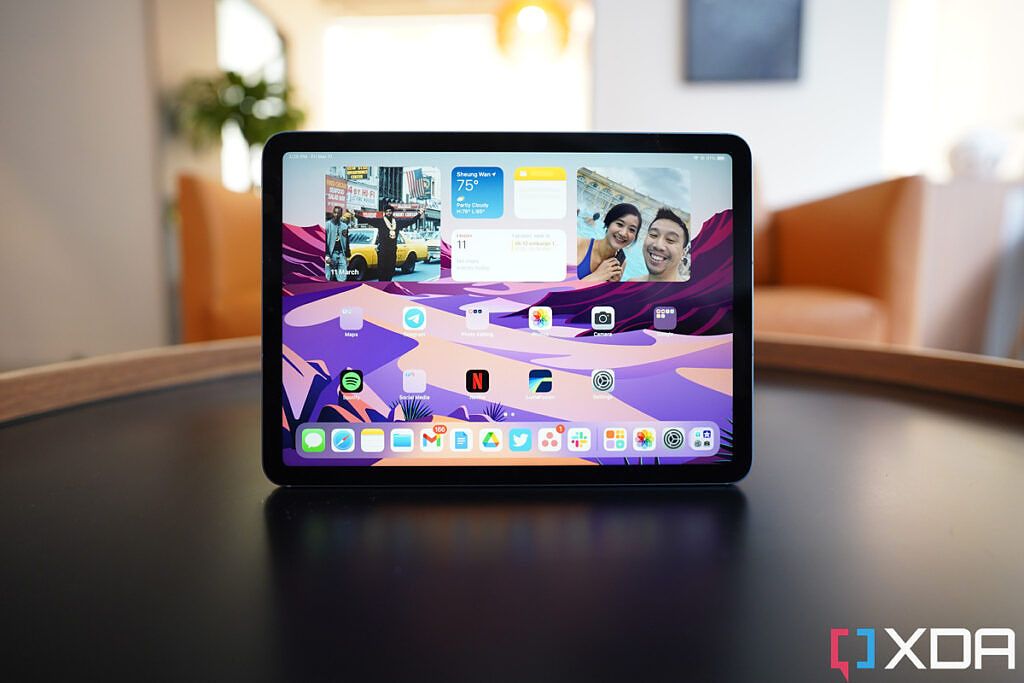When Apple announced it would be building its own silicon to replace Intel processors a couple of years ago, the tech industry didn’t know what to expect. Intel’s processors had been so dominant for so long, that even the most diehard Apple fans weren’t sure Apple silicon could truly power laptops.
And then not only did the Apple M1 deliver — garnering critical acclaim and immediately making Intel-powered Macs lose most of their resale value — Apple is now working towards democratizing the chip to make it available in nearly everything but iPhones (and who knows what will happen there eventually?). With the announcement of the new M1-powered iPad Air 5 (2022), Apple’s silicon is now powering everything from a tablet to a 24-inch desk-bound iMac. The fact that an iPad Air technically packs the same processing power as an iMac is bonkers — but yet here we are.
I already reviewed the M1-powered iPad Pro last year and absolutely loved that tablet. The iPad Air 5 (2022) offers more of the same, but in a more affordable package. This is the iPad most people should buy, which means it’s the tablet most people should buy.
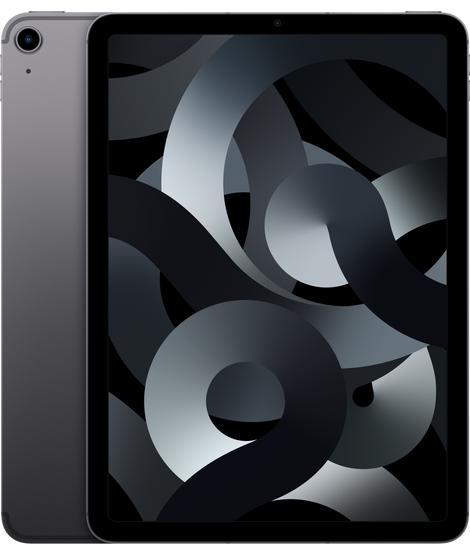
Apple iPad Air (2022)
The new iPad Air with M1 brings iPad Pro level performance to a more affordable, smaller, iPad.
Apple iPad Air 5 (2022): Price and Availability
The iPad Air 5 (2022) is available on sale now on Apple’s website, Apple Stores, or anywhere else that sells Apple products. The base model with 64GB of storage retails for $599, while the 256GB model is priced at $749.
Apple iPad Air 5 (2022): Specifications
|
Specification |
Apple iPad Air 5 (2022) |
|---|---|
|
Build |
|
|
Dimensions & Weight |
|
|
Display |
|
|
SoC |
|
|
RAM & Storage |
|
|
Battery & Charging |
|
|
Security |
Touch ID fingerprint sensor |
|
Rear Camera(s) |
12MP, f/1.8 |
|
Front Camera(s) |
12MP, ultra-wide, f/2.4 |
|
Port(s) |
USB-C |
|
Audio |
Dual Stereo Speakers |
|
Connectivity |
|
|
Software |
iPadOS 15.4 |
|
Other Features |
Compatibility with Apple Pencil (gen 2) and Magic Keyboard |
About this review: Apple provided me with an iPad Air 5 (2022) to test. Apple did not have any input in this article.
Apple iPad Air 5 (2022): Design and Hardware
Just like the iPhone SE 3 that was launched at the same event, the 2022 edition of the iPad Air brings back the exact same design from the previous 2020 model, save for some new flashy colors like blue or purple. The dimensions are exactly the same, so all accessories that worked with the 2020 iPad Air will work here, including the pricey but excellent Magic Keyboard.
In fact, there are really only three hardware changes: the new iPad Air 5 (2022) sees its RAM doubled to 8GB this time, the front-facing camera is now a 12MP ultra-wide camera, and the most important update: the processor got bumped up to M1. Everything else, from display size (10.9-inches) to display technology (2,360 x 1,640 LCD panel with 60Hz refresh rate) to the rear camera hardware are identical.
This isn't a bad thing -- the iPad's modern industrial redesign, which first debuted in 2018's iPad Pro, looks and feels great, without any controversial/divisive decisions like a notch. At 6.1mm, it's relatively thin (though not as thin as the Galaxy Tab S8 series), and the 1 pound weight is light enough for one-hand carry.
The display at just 60Hz is disappointing
The display, at just 60Hz, is disappointing; I've been using both the iPad Pro and Galaxy Tab S8 Ultra (both with 120Hz panels), and the scrolling animations here in the iPad Air are noticeably not as smooth. Like the 2020 model, there's a fingerprint scanner located in the power button and it works perfectly fine.
How does the iPad Air 5 (2022) differ from the iPad Pro (2021), also with M1?
With the addition of the M1 chip, the gap between the new iPad Air 5 (2022) and the 2021 iPad Pro narrows further, particularly with the smaller 11-inch iPad Pro, which has dimensions very similar to the iPad Air. I, however, only have the larger 12.9-inch iPad Pro model on hand for comparison. But still, other than screen size, the 12.9-inch and 11-inch iPad Pro are identical.
Here are all the differences between the 2022 iPad Air and 2021 iPad Pro
- The iPad Pro has a better display panel, it uses Mini LED technology that produces deeper blacks, has a higher refresh rate of up to 120Hz, and it also gets noticeably brighter than the iPad Air's 60Hz LCD screen
- The iPad Pro houses a Face ID scanning system inside the bezels, while the iPad Air uses Touch ID that's part of the power button
- The iPad Pro packs a quad-speaker system that pumps out louder and fuller audio than the iPad Air's dual speaker array
- The iPad Pro's rear camera system has an extra ultra-wide camera and LIDAR scanner (for AR apps)
- The iPad Pro can have RAM up to 16GB and storage up to 2TB; the iPad Air is stuck at 8GB RAM and either 64GB or 256GB or storage
Everything else is identical: the iPad Air's front-facing and rear main camera are the same as the iPad Pro's; they run on the same software; support the same Apple Pencil and Magic Keyboard.
Performance between the two is also really similar, despite the fact I'm testing a 16GB RAM iPad Pro against the 8GB RAM iPad Air. I exported a seven and a half minute 4K/60 footage in LumaFusion on both iPads, and they rendered and exported at the exact same pace (took about eight minutes). Geekbench numbers are very similar, with the iPad Pro winning slightly in multi-core. The only test the iPad Pro shows a conclusive victory is in 3DMark's Wild Life graphic test. The iPad Pro was able to sustain a higher frame rate throughout the test, due to the combination of the iPad Pro having more RAM and a larger body for better heat dissipation.
If you read my review of the 2021 iPad Pro, I called the M1 chip overkill, as it was far too powerful a chip for "just" an iPad; on the iPad Air, it's even more overkill. This is a small, $600 machine with more raw processing power than most laptops or Android devices costing two or three times as much. There's more power here than what the average user needs or knows what to do with.
There's more power here than what the average user needs or knows what to do with
Apple iPad Air 5 (2022): Software, Performance, Battery Life
The iPad Air 5 (2022) runs on iPadOS 15.4, a fork of iOS that is better suited for the large screen. The most notable deviation from iOS is the ability to run two apps at once in split-screen mode. While this process was tedious in iPadOS 13 and 14, requiring several swipes, it’s now much easier on iPadOS 15, with the addition of a multi-tasking menu (in the form of three dots) that is constantly showing in the top middle of most apps. Tapping on the three dots open up the options to either go split-screen, float the window, or go back to full screen (if you were already in the previous two state).
When I use the 12.9-inch iPad Pro, being able to just open two apps at once (technically you can do three, with two in split-screen and one in floating mode, the floating app covers a chunk of one of the split apps) feels limiting; I wish Apple would give us a three-app grid or let us resize the floating windows.
But on the smaller 10.9-inch iPad Air, I don’t mind the two-screen limit, as it seems ideal for the screen size. Still, this doesn’t let Apple off the hook — iPadOS could and should do better in terms of multi-tasking anyway.
Overall software behavior and performance work the same here on the iPad Air 5 (2022) as the iPad Pro or the older 2020 iPad Air. The animations here obviously aren’t as fluid as the ProMotion iPad Pro, but I saw no animation stutters, or app freezes, everything works.
The iPad Air 5 (2022) offers solid battery life -- for productivity use (word processing with some Spotify streaming and video watching), the machine can last a full nine, ten-hour workday and finish with 20% battery left still. If I'm editing videos or using AR apps, then obviously there's a bigger battery drain at up to 10-12% per hour. Charging is done via USB-C and -- surprise, surprise! -- there's a 20W USB-C charging brick included with the packaging.
Using the iPad Air 5 (2022) as a machine for fun
The iPad Air’s lighter weight and smaller size is more ideal as a portable hand-held tablet than the 12.9-inch iPad Pro in my opinion. At 10.9-inches, the display is large enough to offer more immersion than a phone screen (or even a foldable phone screen), but it’s not so large that it becomes unwieldy to hold like the larger iPad Pro or Galaxy Tab S8 Ultra.
I do miss the iPad Pro’s speakers, which are the best in any handheld machine. The iPad Air’s speakers are fine, but the iPad Pro’s speakers can fill an entire room.
Using the iPad Air 5 (2022) as a work machine
To do this you would very likely need a keyboard, which Apple will gladly sell you at a very high price. Still, if you can afford it, the Magic Keyboard is excellent. It provides protection for the iPad Air and also lifts the tablet slightly off the table or lap for a slightly more ergonomic angle, but more importantly, it has backlit keys with good key travel and an uncannily accurate trackpad. Apple’s trackpads (for iPad keyboards or Macs) in my opinion, the best in the business by far. Despite the fact the iPad Air Magic Keyboard’s trackpad is so small in size, I can move the mouse cursor perfectly fine, without accidental taps or the slippery feeling that I get from many other non Apple trackpads. I’m not just talking about tablets here, even the trackpad on Windows laptops (at least the ones I’ve tested, from the likes of Lenovo and Huawei) don’t work as well as Apple’s trackpads. And yes, the Galaxy Tab S8 Ultra keyboard’s significantly larger trackpad doesn’t work as well as the iPad Air’s tiny trackpad too.
The ability to run only two apps at the same time will be too limiting for some, but it could be acceptable for others. For me, whose work includes writing/reading words and editing photos/videos, I can, in fact, do all my work on an iPad (in 2018 I did not own a laptop and worked almost exclusively off an iPad Pro, including producing written and video content while covering trade shows in Barcelona and Berlin). I’d prefer to edit videos on Final Cut Pro these days, but LumaFusion is excellent (far more powerful than any video app in Android tablets) and can handle a 4K/30 timeline with ease.
There’s also support for the Apple Pencil, which creatives find very handy. But ultimately, the reason iPads can do all this is the superior processor (even before the M1, the A series chips could do the job), and a superior app ecosystem. LumaFusion, as I said, is the best tablet video editing app and is only available on iOS/iPadOS. Adobe Lightroom works better on iPadOS than on Android.
I think Android fans who just read the above several paragraphs are probably rolling their eyes, assuming I’m just the typical Apple fanboy. I am not — I carry an Android phone most of the year and my Twitter feed is full of snarky jokes about how much I don’t like the iPhone 13 Pro’s cameras or form factor. Apple’s iPad is just more polished than other rival tablets, with only the Galaxy Tab S8 series even being able to compete.
Who should buy the iPad Air 5 (2022)?
The iPad Air 5 (2022) is the iPad that makes the most sense for most people, which means it’s the tablet that makes the most sense for most people. While the iPad Pro brings a superior screen, speakers, and comes in a larger screen size that’s more suitable for real work, it is perhaps too pricey and too big for some people.
The iPad Air with M1 is basically giving you iPad Pro level performance for less
The iPad Mini, meanwhile, is ultra-portable and the most affordable of all the modern iPads (not counting the entry-level one with the physical home button), but it’s likely too small to get any real work done. The iPad Air 5 (2022) , then, is the happy medium. It’s neither too big nor too small and its starting price of $599 is reasonable, especially since you’re getting the all-powerful M1 chip (that’s overkill on an iPad).
However, as is usual with Apple products, you will likely pay way more than the base retail price to get the full experience. The $599 model of the iPad Air 5 (2022) comes in just 64GB of storage, which is really low in 2022 standards. The next (and only) option up is 256GB, whose price jumps to $749. Then you may want a keyboard or Apple Pencil to take advantage of the awesome capabilities of the iPad Air. Adding both will run your cost closer to $1,000. There are third-party options for keyboards, but not the Apple Pencil.
Despite that, I still think the iPad Air 5 (2022) is worth it. I have long said Apple’s best products — the one product that in my opinion deserves the hype — is the iPad Pro. This iPad Air, with M1, is basically giving you iPad Pro-level performance for less. And that's an absolute win.

Apple iPad Air (2022)
The iPad Air (2022) brings iPad Pro level performance to a more affordable and smaller iPad

